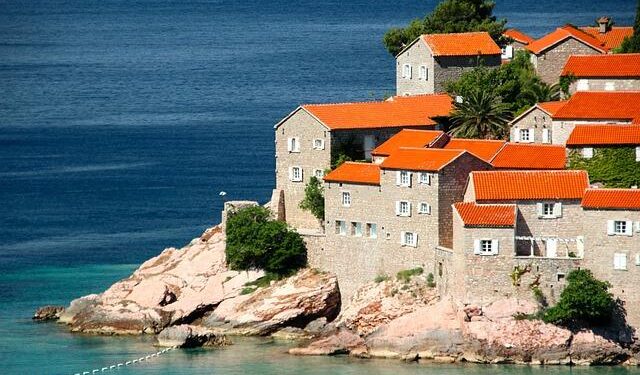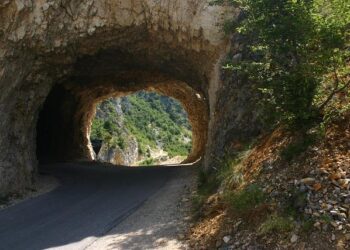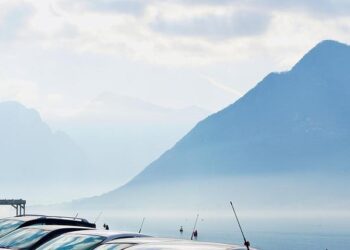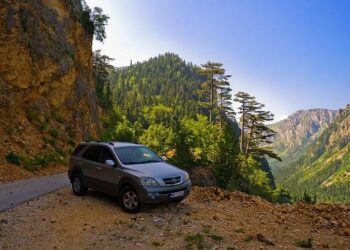Montenegro has taken significant strides in environmental monitoring and sustainability, drawing increasing attention from the European Environment Agency (EEA). As the Balkan nation continues its path toward closer integration with European standards, collaboration with the EEA highlights its commitment to tackling pressing environmental challenges. This article explores Montenegro’s current environmental landscape, the role of the EEA in supporting its policies, and what these developments mean for the country’s future within the broader European context.
Montenegro’s Environmental Challenges Spotlighted by European Environment Agency
Recent findings from the European Environment Agency (EEA) bring Montenegro’s environmental issues into sharp focus, highlighting the urgent need for sustainable policies and enhanced regulatory frameworks. Key challenges identified include air and water pollution, deforestation, and waste management deficiencies, all of which threaten the country’s rich biodiversity and natural landscapes. Despite Montenegro’s efforts to align with EU environmental standards, rapid urbanization and increased tourism continue to exert pressure on its fragile ecosystems.
The EEA report further outlines critical areas requiring immediate attention:
- Air Quality: Elevated particulate matter levels in urban centers.
- Water Resources: Contamination risks from agricultural runoff and insufficient wastewater treatment.
- Forest Conservation: Illegal logging impacting native forests.
- Waste Management: Gaps in recycling infrastructure and landfill controls.
| Environmental Indicator | Current Status | EEA Priority Level |
|---|---|---|
| Air Pollution (PM2.5) | Moderate to High | High |
| Water Quality | Variable; local contamination hotspots | Medium |
| Forest Coverage | Declining in key areas | High |
| Waste Recycling Rate | Below EU average | High |
Detailed Analysis of Montenegro’s Air and Water Quality Trends
Recent data from the European Environment Agency (EEA) highlights significant shifts in Montenegro’s air quality metrics over the past decade. While urban areas such as Podgorica continue to grapple with elevated PM2.5 and NO‚āā concentrations, rural and coastal regions show marked improvements thanks to stricter emission regulations and increased adoption of renewable energy sources. Notably, the average annual PM2.5 levels in industrial zones decreased by approximately 15% between 2015 and 2023, reflecting ongoing environmental policy efforts. However, episodic spikes during winter months linked to residential heating remain a persistent challenge.
Water quality trends reveal a contrasting narrative. Enhanced wastewater treatment infrastructure and cross-border cooperation have led to a steady improvement in coastal water standards, safeguarding Montenegro’s vital tourism sector. The following table summarizes key indicators for both freshwater and marine environments, measured in 2023:
| Water Quality Indicator | Freshwater Rivers (%) | Coastal Waters (%) |
|---|---|---|
| Good Ecological Status | 67 | 84 |
| Moderate Pollution | 22 | 12 |
| High Nutrient Concentrations | 11 | 4 |
Key drivers behind these improvements include:
- Implementation of EU Water Framework Directive standards
- Investment in eco-friendly agricultural practices reducing runoff
- Public awareness campaigns on pollution prevention
- Cross-sector collaboration between government agencies and NGOs
Despite this progress, localized contamination from mining activities and tourism-related pressures still pose risks that require ongoing vigilance and adaptive management.
Recommendations for Strengthening Montenegro’s Sustainable Development Policies
To elevate Montenegro’s trajectory towards sustainable development, a multi-faceted approach involving key sectors and stakeholders is crucial. Emphasizing integrated policy frameworks that align environmental objectives with economic growth can drive more impactful results. This includes the adoption of innovative technologies in renewable energy, comprehensive waste management systems, and the promotion of eco-friendly tourism that both protects natural habitats and supports local communities.
Furthermore, strengthening governance and fostering public-private partnerships will play a pivotal role. Prioritizing transparent data sharing and enhanced monitoring mechanisms ensures accountability and adaptive management. Key recommendations include:
- Enhancing cross-sectoral collaboration to streamline sustainable resource use.
- Investing in capacity building and environmental education at all levels.
- Implementing robust incentives for green businesses and clean technologies.
- Improving urban planning with a focus on resilience and climate adaptation.
| Policy Area | Action | Expected Outcome |
|---|---|---|
| Renewable Energy | Expand investment in solar and wind projects | Reduce carbon emissions by 25% |
| Waste Management | Adopt circular economy practices | Decrease landfill waste by 40% |
| Tourism | Develop sustainable eco-tourism guidelines | Preserve biodiversity and boost local incomes |
Concluding Remarks
In summary, Montenegro’s ongoing environmental efforts, as highlighted by the European Environment Agency, reflect both significant progress and persistent challenges. As the country continues to align with European environmental standards, its commitment to sustainable development and biodiversity protection remains crucial. Monitoring these developments will be key to understanding Montenegro’s role within the broader European environmental landscape in the years ahead.
















